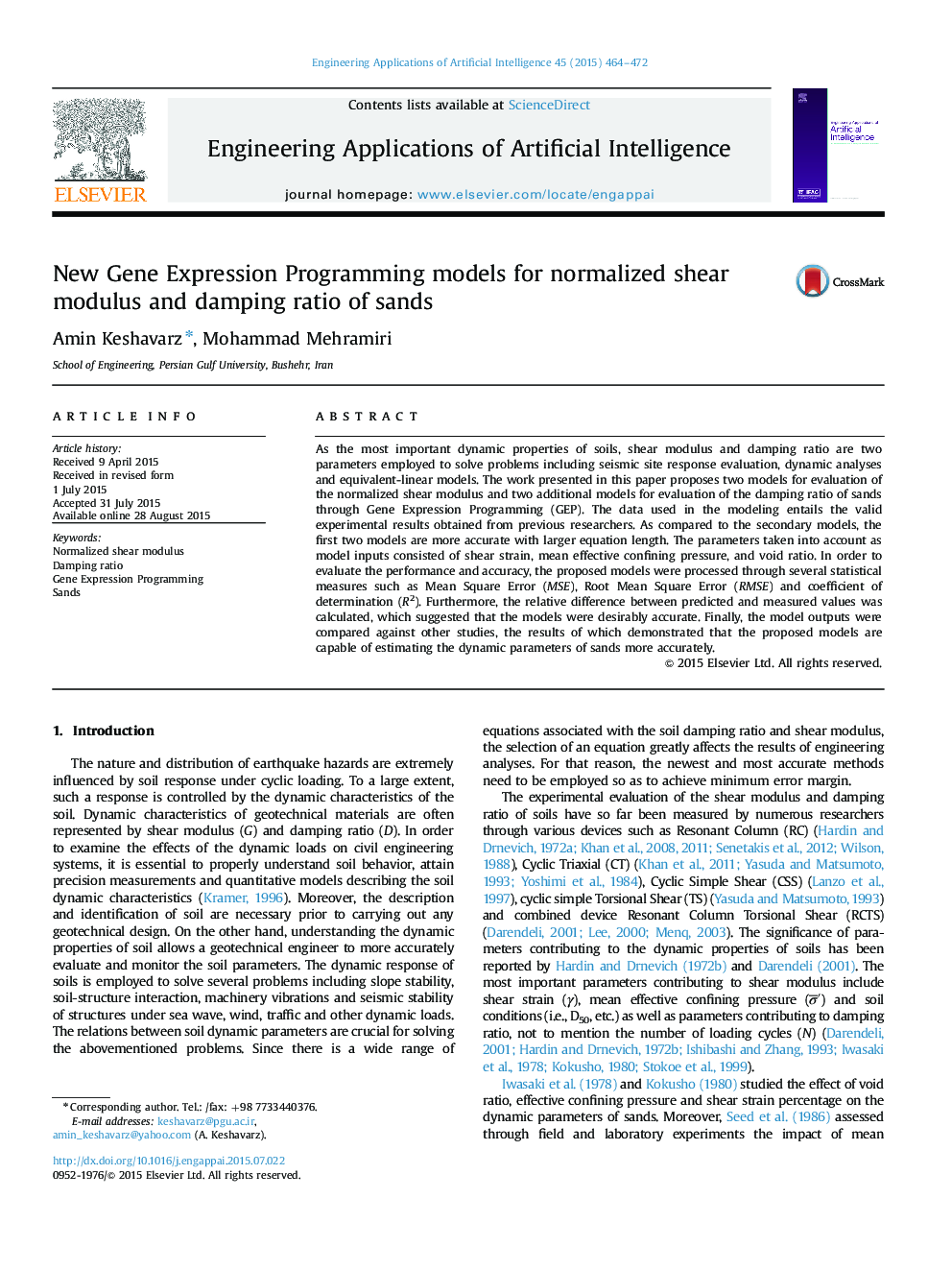| Article ID | Journal | Published Year | Pages | File Type |
|---|---|---|---|---|
| 380397 | Engineering Applications of Artificial Intelligence | 2015 | 9 Pages |
•Paper proposes several new models based on GEP for dynamic properties of sands.•Models can predict normalized shear modulus and damping ratio of sands.•Proposed equations have been measured through published experimental data.•Comparison between predicted and measured values showed high accuracy of models.•The accuracy of other common models was assessed through experimental data.
As the most important dynamic properties of soils, shear modulus and damping ratio are two parameters employed to solve problems including seismic site response evaluation, dynamic analyses and equivalent-linear models. The work presented in this paper proposes two models for evaluation of the normalized shear modulus and two additional models for evaluation of the damping ratio of sands through Gene Expression Programming (GEP). The data used in the modeling entails the valid experimental results obtained from previous researchers. As compared to the secondary models, the first two models are more accurate with larger equation length. The parameters taken into account as model inputs consisted of shear strain, mean effective confining pressure, and void ratio. In order to evaluate the performance and accuracy, the proposed models were processed through several statistical measures such as Mean Square Error (MSE), Root Mean Square Error (RMSE) and coefficient of determination (R2). Furthermore, the relative difference between predicted and measured values was calculated, which suggested that the models were desirably accurate. Finally, the model outputs were compared against other studies, the results of which demonstrated that the proposed models are capable of estimating the dynamic parameters of sands more accurately.
